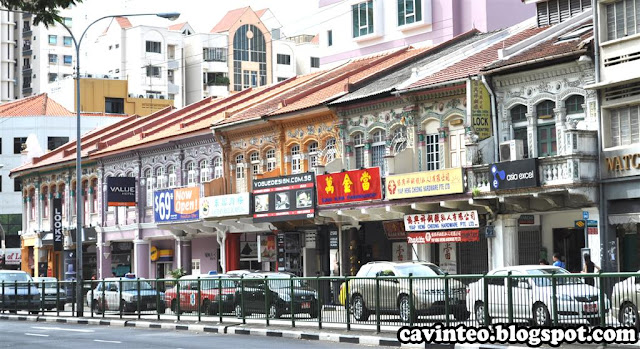When you mention Balestier road, it's always about the tau sar piah, the durians and maybe, the Sun Yat Sen memorial hall.
Although it's a weekly (almost) schedule for me to drive to Balestier, the reason is not due to any factors stated above!
My dearest mom will ask me to send her to a diminutive Taoist temple that worship Tua Pek Gong (which by the way, is what Hokkien Chinese called their paternal grandfather's eldest brothe) so that she can partake in her faithful prayers.
The boring son, me, will either play iPhone games in the coolness of the air-conditioned car or sweat it out in the sun to take pictures!
This temple (literally translated as Rochor Tua Pek Gong), has a long history (at least for Singapore) that goes back to 1847; a mere 28 years after Sir Stamford Raffles miraculously 'discovered' the lion city.
Used to seeing statues of Chinese deities out in the open with minimal barrier, the metal grilles gave an impression that the statues here could be more valuable than expected, given its long history.
It's so old in Singapore's perspective, there are at least two plaques lining the temple's ceiling that bear the period of the Qing Dynasty!
The picture above shows one dated from the era of the tenth emperor of the Qing Dynasty; Tong Zhi (year 1856-1875).
With a private carpark on temple grounds that takes up more space than the single storey temple itself, i am quite amazed that such a small temple can still attract a constant flow of worshippers!
One of the most noticeable structures in the temple compound is the traditional Chinese opera (wayang) stage. Mind you, besides boasting a history of more than 100 years, it is also the only freestanding wayang stage on mainland Singapore!
And don't think it's just a white elephant! During major religious events like the Chinese Ghost month, puppet shows and Chinese operas are still staged despite waning popularity.
Colourful ornaments adorn the temple's roof that look more like opera performers instead of deities. Not sure if there's indeed a direct link to the century-old stage.
Worship of the master tiger (虎爷); an animal deity that supposedly has the power to suppress evil and the ability to generate wealth. Chunks of raw meat were purposely placed in the carnivourous tigers' mouth as offering.
Conventional burner lacking the modern smoke control facility continues to be in use in this temple, which can be an eyesore for environmentalist.
=====
Location
Right next to Combat Durians.













No comments:
Post a Comment